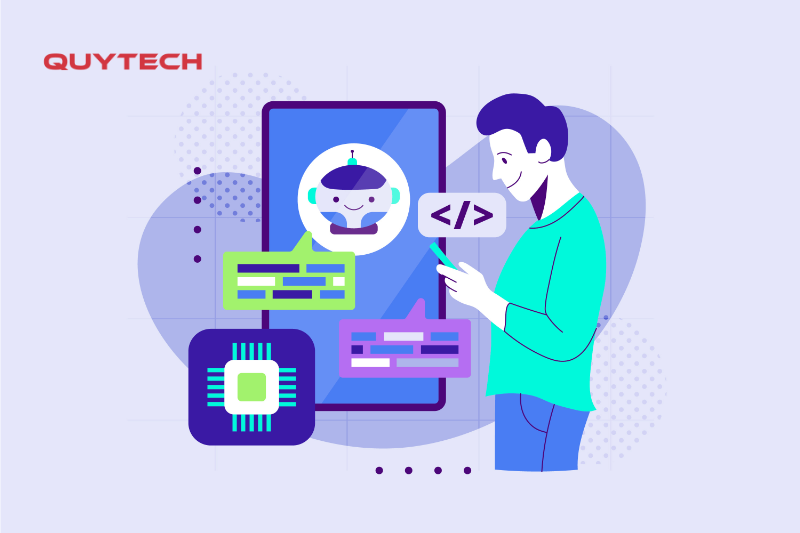Artificial Intelligence (AI) is transforming the world of app development, offering unprecedented opportunities for innovation and efficiency. However, the integration of AI into mobile and web applications presents several challenges that can impact the success of your project. In this blog, we’ll explore common obstacles in Artificial Intelligence app development company and provide practical solutions and strategies to overcome them.
Introduction
AI technologies have the potential to revolutionize how apps interact with users, from personalizing experiences to automating tasks. Yet, with these advancements come unique challenges. Understanding and addressing these hurdles is crucial for developing effective and reliable AI-powered applications. In this blog, we’ll delve into the key challenges in AI app development and offer actionable strategies to tackle them effectively.
Common Challenges:
1. Data Quality and Availability
Description:
Data is the backbone of any AI application. High-quality, relevant data is essential for training accurate and effective models. However, many AI projects struggle with issues like incomplete datasets, inaccuracies, and biases, which can severely impact the performance of the application.
Solutions:
Data Collection: Start by defining clear objectives for what data you need and where to source it. Utilize diverse data sources and consider partnerships with data providers to obtain comprehensive datasets.
Data Cleaning: Implement rigorous data preprocessing techniques to clean and standardize data. Tools like Pandas and data cleaning frameworks can help in identifying and correcting errors.
Data Augmentation: Use techniques such as data augmentation to expand your datasets artificially. This can include adding noise, rotating images, or using synthetic data generation to enrich your training data.
2. Model Accuracy and Performance
Description:
Achieving high model accuracy is critical for the functionality of AI apps. Models that perform poorly can lead to unsatisfactory user experiences and undermine the app’s value.
Solutions:
Model Selection: Choose the right model architecture based on your specific problem. Techniques like transfer learning and pre-trained models can provide a strong starting point.
Hyperparameter Tuning: Optimize your model’s hyperparameters to enhance performance. Tools such as Grid Search or Random Search can assist in finding the best parameters for your model.
Cross-Validation: Employ cross-validation techniques to assess your model’s performance on different data subsets. This helps in ensuring that your model generalizes well to unseen data.
3. Integration with Existing Systems
Description:
Integrating AI models into existing applications and systems can be complex, involving compatibility and operational challenges.
Solutions:
API Integration: Use APIs to connect AI models with your app. RESTful APIs and GraphQL can facilitate seamless interactions between your app and AI services.
Modular Design: Design your app architecture to be modular, which allows for easier integration of AI components without disrupting existing functionalities.
Compatibility Testing: Regularly test the integration to ensure that AI models work well with existing systems. Implementing automated testing can help identify and resolve issues quickly.
4. Scalability
Description:
As AI apps grow in popularity, they need to handle increased loads and data volumes efficiently. Scalability is essential for maintaining performance and user satisfaction.
Solutions:
Cloud Solutions: Leverage cloud platforms such as AWS, Google Cloud, or Azure for scalable computing resources. These platforms offer auto-scaling capabilities to adjust resources based on demand.
Distributed Computing: Use distributed computing frameworks like Apache Spark or Hadoop to manage large datasets and complex computations efficiently.
Performance Optimization: Continuously monitor and optimize your app’s performance. Techniques such as caching, load balancing, and code optimization can help manage increased traffic and data loads.
5. Privacy and Data Security
Description:
AI applications often handle sensitive user data, making privacy and security a top priority. Ensuring that user data is protected against breaches and misuse is essential.
Solutions:
Data Encryption: Implement strong encryption methods for data at rest and in transit. Use protocols like TLS/SSL for secure data transmission.
Anonymization: Anonymize user data to protect individual identities while still allowing for meaningful analysis. Techniques such as data masking and aggregation can help in maintaining privacy.
Compliance: Adhere to data protection regulations such as GDPR and CCPA. Ensure that your app’s data handling practices are compliant with legal requirements.
6. Managing AI Bias
Description:
Bias in AI models can lead to unfair or discriminatory outcomes. Addressing and mitigating bias is crucial for creating equitable AI applications.
Solutions:
Bias Detection: Implement tools and techniques to identify bias in your AI models. Analyze model predictions and outcomes for signs of unfair treatment.
Bias Mitigation: Use strategies such as diversifying training data and adjusting algorithms to reduce bias. Techniques like reweighting and adversarial debiasing can be effective.
Transparency: Promote transparency in AI decision-making processes. Provide users with clear explanations of how AI-driven decisions are made.
7. Continuous Maintenance and Updates
Description:
AI apps require ongoing maintenance and updates to remain effective and relevant. Managing these updates is crucial for sustaining app performance.
Solutions:
Regular Monitoring: Set up monitoring systems to track app performance and model accuracy continuously. Use analytics to identify areas for improvement.
Feedback Loops: Create mechanisms for collecting user feedback and incorporating it into model updates. This helps in addressing issues and improving the app based on real-world usage.
Version Control: Implement version control for your models and application code. This ensures smooth transitions between updates and helps in managing changes effectively.
Conclusion
AI app development presents a range of challenges, from data quality and model accuracy to integration, scalability, privacy, and bias. By understanding these challenges and implementing the solutions and strategies discussed, you can enhance the effectiveness and reliability of your AI-powered applications. Embracing best practices in AI development you need to hire AI Developers to overcome these obstacles but also pave the way for innovative and impactful solutions.




